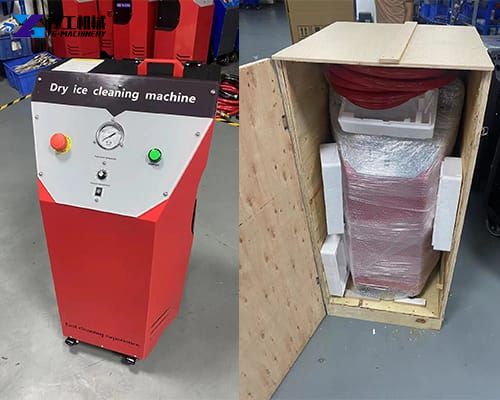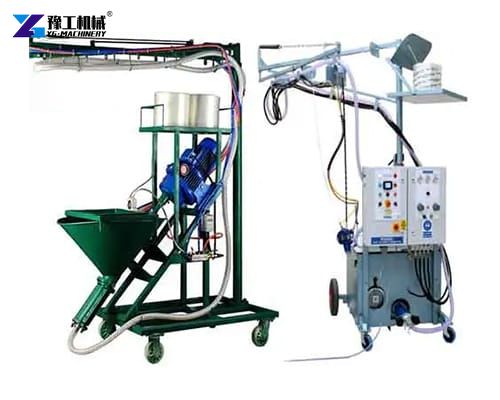Dry ice rust removal machine, also named portable dry ice cleaning machine, employs solid carbon dioxide (dry ice) pellets as the cleaning medium. These pellets, propelled at supersonic speeds by compressed air, impact the surface being cleaned. Upon impact, the dry ice undergoes sublimation, instantly transitioning from a solid to a gaseous state. This rapid phase change creates a mini-explosion, effectively lifting and removing rust, contaminants, and coatings without damaging the underlying substrate.
The Advantages of Dry Ice Cleaning
The dry ice rust removal machine offers a multitude of advantages over traditional rust removal methods:
- Non-Abrasive Cleaning: Dry ice blasting is a non-abrasive process, meaning it does not damage the surface being cleaned. This is particularly beneficial for delicate surfaces, intricate components, and valuable equipment.
- Environmentally Friendly: Dry ice is a byproduct of other industrial processes, making it an environmentally sustainable cleaning solution. It eliminates the need for harsh chemicals, solvents, and abrasive materials, reducing waste and minimizing environmental impact.
- Efficient and Time-Saving: Dry ice blasting is a highly efficient cleaning method, capable of removing rust and contaminants quickly and effectively. It minimizes downtime and maximizes productivity.
- Clean and Dry Process: Dry ice sublimates upon impact, leaving no residue or secondary waste. This eliminates the need for extensive cleanup and ensures a clean and dry surface.
- Access to Hard-to-Reach Areas: The gaseous nature of dry ice allows it to penetrate into tight spaces, crevices, and complex geometries, effectively removing rust and contaminants from areas that are difficult to access with traditional methods.
- No Secondary Waste: Because the dry ice sublimates there is no secondary waste that would need to be cleaned up.
Applications of Dry Ice Rust Removal Machines
Automotive Industry: Removing rust from vehicle frames, undercarriages, and engine components.
- Aerospace Industry: Cleaning aircraft components, removing corrosion from landing gear, and preparing surfaces for painting.
- Manufacturing Industry: Cleaning molds, machinery, and equipment, removing rust from production lines, and preparing surfaces for coatings.
- Restoration Industry: Restoring historical artifacts, removing rust from metal structures, and cleaning delicate surfaces.
- Power Generation Industry: Cleaning turbines, generators, and other power generation equipment, removing rust and contaminants, and improving efficiency.



